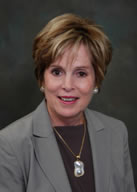

April 2005
 |
 |
| Volume 1, Issue 3 April 2005 |
|
Loving Safely: What You Should Know About STDs |
| In this publication |

|
One of the reasons April is “ Sexually Transmitted Disease Month” is STDs are the most common infectious disease in the United States and are epidemic in most parts of the world. As you might be aware, the incidence of 2 STDs, HIV/AIDS and Chlamydial infection, has increased significantly in the last 25 years. All STDs present unique challenges because of the perceived stigma and possible threat to emotional relationships. Those with symptoms are often reluctant to seek health care in a timely fashion. With this in mind, please read further.
|
 |
Why STDs? |
|
|
Newsletter
Contributors
|
What
are They? |
||
|
STDs |
Caused by |
Medical Treatment |
|
| Chlamydia | Chlamydia trachomatis | Antibiotics | |
| Gonorrhea | Neisseria gonorrhoeae | Antibiotics - However, drug resistant strains of this disease are emerging, so treatment can be difficult. | |
| Syphilis | Treponema pallidum | Penicillin is the standard antibiotic used; however, other antibiotics can be used if the patient is allergic to Penicillin. | |
| Trichomoniasis |
Trichomonas Vaginalis (flagellated protozoan) |
Metronidazole in a single dose
cures up to 95% of women at initial treatment if sexual partners are
treated simultaneously. Men may be treated for 7 days, especially if a single dose is not curative. |
|
| Chancroid |
Haemophilus Ducreyi (bacterium) |
Erythromycin for 7 days, ceftriaxone once, azithromycin once, or ciprofloxacin for 3 days. | |
| Genital Herpes |
Herpes
Simplex Virus type 2 (HSV-2) but also (10 to 30%) with type 1 (HSV-1) |
Antiviral therapy for HSV reduces viral shedding and symptoms; however, it does not abort latent infections or prevent recurrences. | |
| Genital Warts | Human Papillomavirus (HPV) | No treatment is completely satisfactory. Warts may be removed by laser, cryotherapy, or surgical excision using a local or general anesthetic. | |
|
Useful |
Signs and Symptoms
Signs and symptoms of STDs can vary depending on the type of
infection. Being alert for them can help you stay healthy. STDs
initially cause no symptoms. When symptoms develop, they may
be confused with those of other diseases not transmitted through
sexual contact.
Abstinence is the best way to prevent STDs from occurring and reoccurring. More realistic approaches are a ‘mutually’ monogamous relationship or, at the very least, the use of condoms during every sexual act. You are never too old to be at risk and to learn how to keep yourself safe and healthy. Sometimes there may be no noticeable signs of STDs. If you have any of the above signs or symptoms or think you may have been exposed to a sexually transmitted disease, make an appointment to see your primary care provider or visit your local health department immediately.
Education is the key! The more risk factors you have, the more likely you are to develop the condition. Any of the following may increase your risk for contracting sexually transmitted diseases:
|
|
|
Color Atlas and Synopsis of H. Hunter Handsfield |
||
|
Sexually Transmitted Diseases Sourcebook Dawn D. Matthews, ed. |
||
|
Everybody: Preventing HIV and Other Sexually Transmitted Diseases
Deborah R. Schoeberlein |
||
|
Sexually Transmitted Diseases: Vaccines, Prevention and Control. Lawrence R. Stanberry and David I. Bernstein, eds. |
||